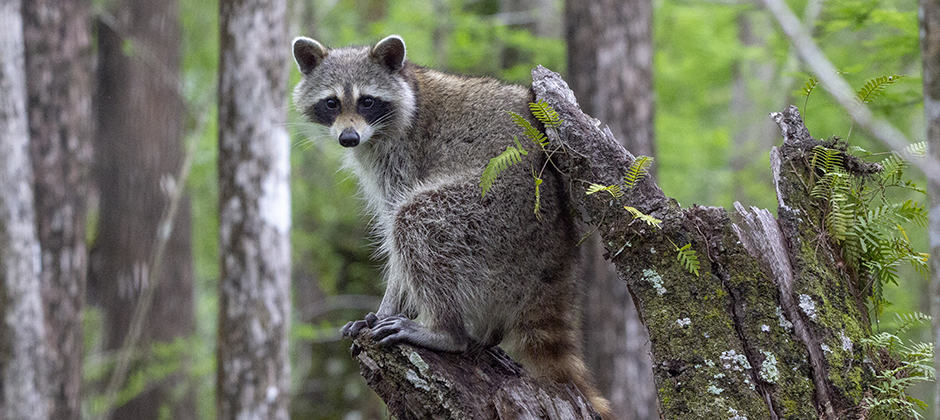Share this article
Coyotes are eating raccoons’ rabies vaccination bait
Coyotes (Canis latrans) and feral swine (Sus scrofa) have been unintentionally vaccinated by stealing bait intended to inoculate raccoons (Procyon lotor) from rabies in Florida.
Wildlife managers believe that to control the spread of the disease, they would need to vaccinate between more than 60 percent of raccoons in a given population. While feral swine and coyotes were less than half as likely to visit stations as raccoons and didn’t always steal the vaccine bait when they did stop by, these small thefts might leach away just enough to compromise the effectiveness of the program for raccoons.
“There’s been a rabies epizootic in the U.S. for a long time,” said Richard Engeman, a research wildlife biologist with the U.S. Animal and Plant Health Inspection Service (APHIS)’s National Wildlife Research Center and one of the authors of a study published recently in Environmental Science and Pollution Research.
Rabies affects a number of different animals such as raccoons, foxes and skunks and is fatal to humans unless treated early. The fact that raccoons often live in high densities in urban areas means the disease presents an increased danger to humans and their pets as well.
Wildlife managers in Florida attempted to control the disease by dropping baited vaccines intended for raccoons from airplanes in hard-to-reach areas in the state. The program is no longer running.
“The idea is that you get a high enough percentage of the population and you get herd immunity,” Engeman said.
But he and his co-authors wanted to see whether other animals might be stealing these palatable snacks from their intended recipients.
The researchers set up a number of bait stations in Pasco County, just north of Tampa Bay in 2005. They recorded whether the bait was taken and which species had visited the location based on animal tracks.
The researchers discovered that four prime animals tended to visit the stations. Luckily for the aerial bait vaccination program, raccoons seemed to visit the bait stations more often than any of the species.
“The raccoons ate by far and away the most bait, which was good,” Engeman said.
They also found white-tailed deer (Odocoileus virginianus) visited these sites often but didn’t seem to take the bait that much, if at all, since bait was rarely removed from stations with only deer tracks.
But coyotes and invasive feral swine were also likely to show up and consume bait, the researchers found.
Engeman said the “silver lining” in coyotes and pigs eating the vaccines is that both species can contract and spread rabies as well. By stealing bait, they gained immunity from the disease.
Another problem was fire ants (Solenopsis). Even though the ants didn’t necessarily eat all the bait, Engeman said that these aggressive insects could deter raccoons from an otherwise easy meal. “A bait covered in fire ants is a lot less palatable, as you would think,” he said.
The study highlights the value of knowing which non-target species might take bait. For example, managers can adjust baiting densities when they know that feral swine or other non-target species are in a given area.
While the airplane vaccine bait program is no longer used in Florida, the research could inform baiting programs in other areas. But further research is needed to determine if enough raccoons are getting vaccinated to stop the spread of the disease, Engeman said.
Header Image: Coyotes and feral swine may compromise the effectiveness of a rabies vaccination programs. ©Sarah Sapp








